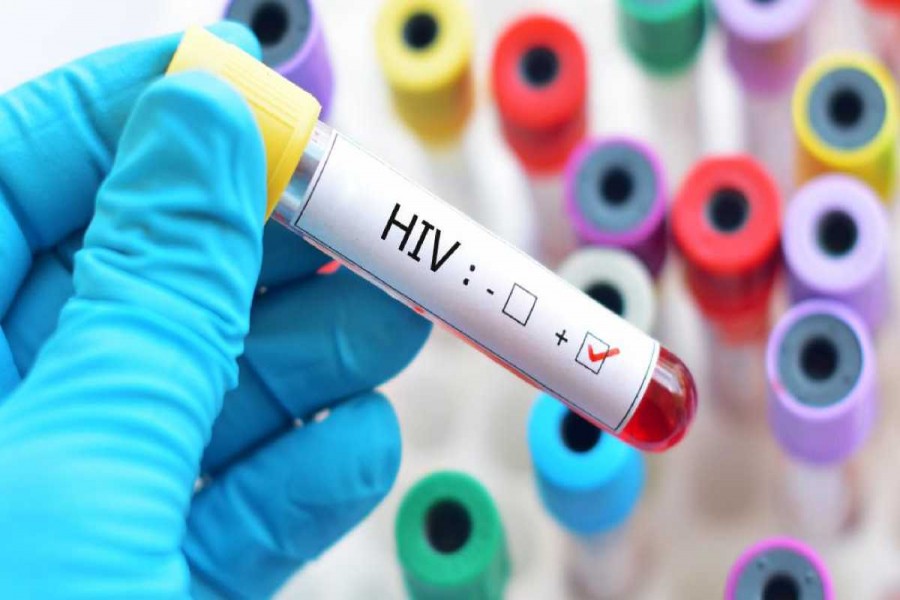Over one-third of the total HIV positive people live in Dhaka, the highest among 23 high-risk districts of the country which are under surveillance.
The number of people living with HIV in Dhaka is 2,572 of whom 35 per cent are the returnee migrants, sometimes the returnee migrants hide their disease and spread it in the families.
The overall rate of HIV positive among the returnee migrants and non-resident Bangladeshis in the country is 20 per cent. The second highest categories of people who are HIV positive in Dhaka are the injecting drug users which are 24 per cent.
In Bangladesh, still 50 per cent HIV positive cases are missing as only 7,400 cases out of the total 14,000 are detected, posing great risk.
These were disclosed on Saturday at an advocacy workshop on 'Role of Mass Media Reducing Stigma and Discrimination towards HIV and AIDS' at DG health. Tuberculosis-Leprosy and AIDS STD Programme of DGHS organized the event marking World AIDS Day 2020 which falls on 01 December.
DGHS additional DG (admin) Professor Dr Nasima Sultana was present as the chief guest while media personalities and actors Mamunur Rashid and Azad Abul Kalamas the special guests.
Senior manager of HIV AIDS Akhtaruzzaman made a presentation on the issue.
In his presentation, Mr Akhtar showed that HIV-AIDS prevalence is 0.01 per cent among the general population and 3.9 9 per cent among key populations who include female sex workers, transgender and people who use drugs by injection. Positivity among people who inject drugs in Dhaka is 2.0 per cent.
As of 2019, a total of 7,374 people were HIV positive of whom 1,242 died. In 2019, a total of 919 new cases were detected of whom over 100 were from the Rohingya community in Bangladesh. The rate of positivity among the Rohingya population is 0.8 per cent which is very high.
Out of total 919, 170 HIV positive people died in 2019. The number of new positive cases was over 800 in 2018.
The highest number of HIV positive people lives in Dhaka city, followed by Chattogram 2,008, Sylhet 1,219, Khulna 650, Rajshahi 192, Barishal 179, Mymensingh 86 and Rangpur 68.
"A total of 23 districts are under special surveillance. Among the migrants and non-resident Bangladeshis, the positivity rate is 20 per cent. We are providing training on HIV/AIDS in a session of three hours at 70 BMET in the country for migrant workers," he said. There are 2.0 per cent positive cases among the fetus of the HIV positive pregnant women.
The situation is worse because of the neighbouring countries, especially India. There are 10 brothels in the country of which 4,421 confirmed HIV cases are under the government programme along with 28,000 transgender.
But there is hardly any data available on sexually transmitted infection (STI). IEDCR has been conducting a surveillance programme to know the country's situation.
In 2020, the target of test has not been achieved due to Covid-19 pandemic. In 2019, the testing target was 900, in 2018 it was 800. In 2020, the target was 1,000.
Mr Akhtar also informed the workshop that Bangladesh missed the testing at GAMCA (Gulf Approved Medical Centres Association) this year due to Covid-19 which tests almost 0.7 million migrants.
In answering questions on whether the number of HIV positive cases is increasing in Bangladesh, TBL and ASD line director Professor Dr Shamiul Islam said the detection rate has increased as there are 28 testing centres in the country. Although case detection has increased, they are coming under programmes. As the number of positive cases is very low in Bangladesh, they are getting all treatment and test free of cost.
Professor Nasima Sultana said media can play a vital role in removing the misconception, prejudices from the society and discrimination towards the AIDS patients. People consider the AIDS patient as a victim of sin whose character is not good.
She suggested making the publicity and communication tools to be more relevant with life to make the awareness messages effective.


